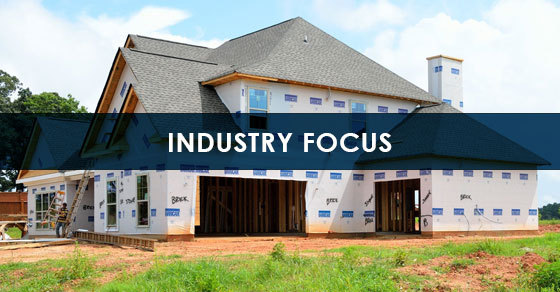A recent report estimates that the global gypsum industry will grow by more than 75% in the next decade, largely in response to the construction industry, with wallboard as a primary market driver for the mineral. Globally, the wallboard market is expected to expand at a staggering CAGR of 11.4% between 2019 and 2025.
While this substantial growth in demand is cause for celebration, the industry also has a few challenges to overcome, chiefly the reduction in available synthetic gypsum, and the growing pressure on producers to implement widespread wallboard recycling.
Why Wallboard Use is on the Rise
Gypsum wallboard lends a number of benefits in construction that continue to support growing demand for the product. It is cost-effective, resistant to fire, lightweight, offers aesthetic appeal, and has sound-dampening qualities. It meets a variety of regulatory requirements and also helps as a thermal insulator in homes and commercial buildings.
Several factors are pushing demand for wallboard to grow both domestically and globally:
Developing Nations
As developing nations advance, they are increasingly turning to gypsum wallboard to meet construction needs.
Recovering US Housing Market
Before the pandemic hit, the US housing market was experiencing a much-needed rebound, with new housing starts up 3.2% in 2019 compared to 2018, and all regions of the country seeing a rise. And while the market took a hit in response to the virus, it quickly came back, surpassing pre-pandemic levels in June, according to industry expert Redfin.
And while it’s too soon to say for sure how the virus will impact the market in the long term, it has already caused a surge in buyers looking to move out of the cities into less populated areas, a trend likely to push new home builds and renovations.
Increase in Remodeling
The pre-pandemic economic rebound was also playing into demand for gypsum as a healthier economy gave rise to more disposable income, bolstering residential remodeling projects. Interestingly, instead of taking a hit from the pandemic, home renovations were one of the few fortunate sectors to see an increase, with homeowners finally able to devote time to the projects they had previously put off. A US Census Bureau report revealed that building materials suppliers and retailers in the home renovation space saw a year-over-year increase of 22.6 percent.
As the industry standard for interior walls and ceilings, new home construction and renovations rely heavily on gypsum wallboard.
Booming Rental Market
In some areas, a trend toward high-rise condos and rental units is also pushing demand for more wallboard. Cabot Manufacturing recently announced plans to expand their gypsum wallboard plant in Nova Scotia, in large part due to the rise in demand for rentals. However, as COVID makes multi-family units less attractive and pushes more people out of densely populated areas, this trend is increasingly under scrutiny and only time will tell where the proverbial cards will land.
The Challenge Facing Some Gypsum Wallboard Producers
While demand for wallboard booms, some suppliers are facing a challenge in terms of gypsum supply. Many wallboard producers took advantage of synthetic gypsum, a byproduct of the flue gas desulphurization process at coal-fired power stations. According to the Gypsum Association, about half of the gypsum used in the production of wallboard originates from the coal power industry.
Unfortunately, many wallboard producers built their business around the supply of synthetic gypsum, locating plants in close proximity to coal-fired power. But as coal falls out of favor, these wallboard producers are seeing their supply of synthetic gypsum dry up.
The trend is putting pressure on energy firms and preventing some from meeting contractual obligations to wallboard producers. As the cost of synthetic gypsum rises, producers will be forced to pay higher material and shipping costs to secure a source. Sources of mined gypsum are plentiful, but not an equal substitute for all wallboard applications.
More Wallboard = More Waste
In addition to the declining supply of synthetic gypsum, the industry is also facing increasing pressure to reduce wallboard waste, which is produced in large amounts as a result of both new construction and demolition. With demand set to balloon, that pressure is mounting.
When landfilled, gypsum wallboard is capable of producing hazardous hydrogen sulfide gas, a fact that has seen increasing regulation around wallboard disposal in recent years. Further, disposing of wallboard is not a sustainable approach and makes even less sense considering that gypsum is infinitely recyclable and holds several beneficial reuse opportunities.
Though there are a few hurdles to overcome before there is widespread adoption, many companies have already proven that wallboard recycling can be successful, with most focusing on producing either new wallboard, or a gypsum soil amendment from the waste.
Gypsum from wallboard waste that has been processed into a soil amendment product in the FEECO Innovation Center
Conclusion
The gypsum wallboard market is predicted to experience a significant boost in demand, owing to many drivers, including developing nations and a recovering housing market. As coal-fired power declines, however, acquisition of synthetic gypsum will continue to present challenges for some manufacturers, and the industry as a whole will have to take more action on recycling wallboard.
FEECO has been serving the gypsum industry since 1951, providing ore dryers for preparing mined gypsum for use in wallboard production, as well as a variety of equipment and services focused on processing both natural and synthetic gypsum for use as a soil amendment. This includes batch- and pilot-scale testing, custom equipment design and fabrication for drying, granulation/agglomeration, and handling, as well as a diverse range of parts and service support for gypsum processing operations. For more information on our gypsum processing equipment and services, contact us today!


